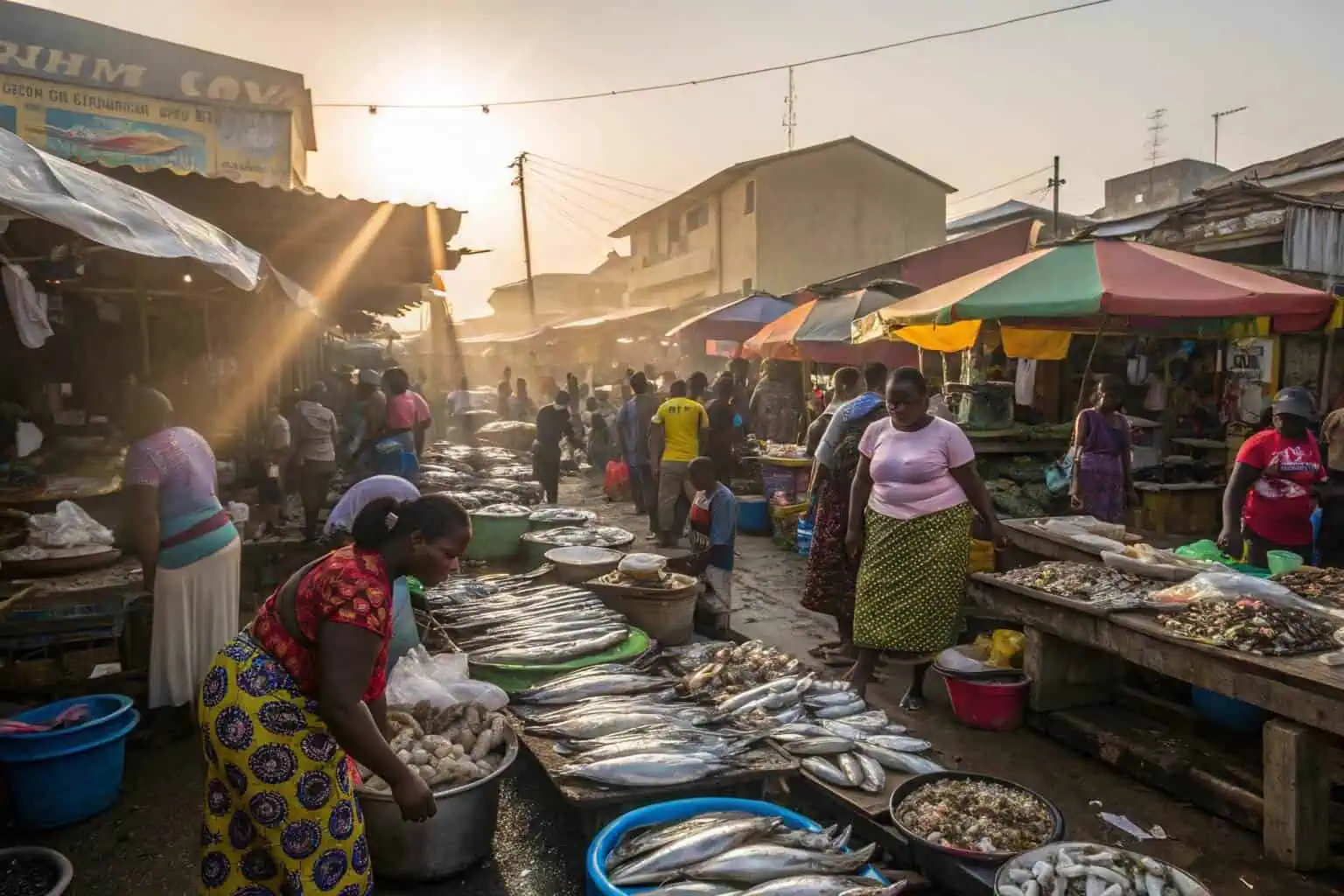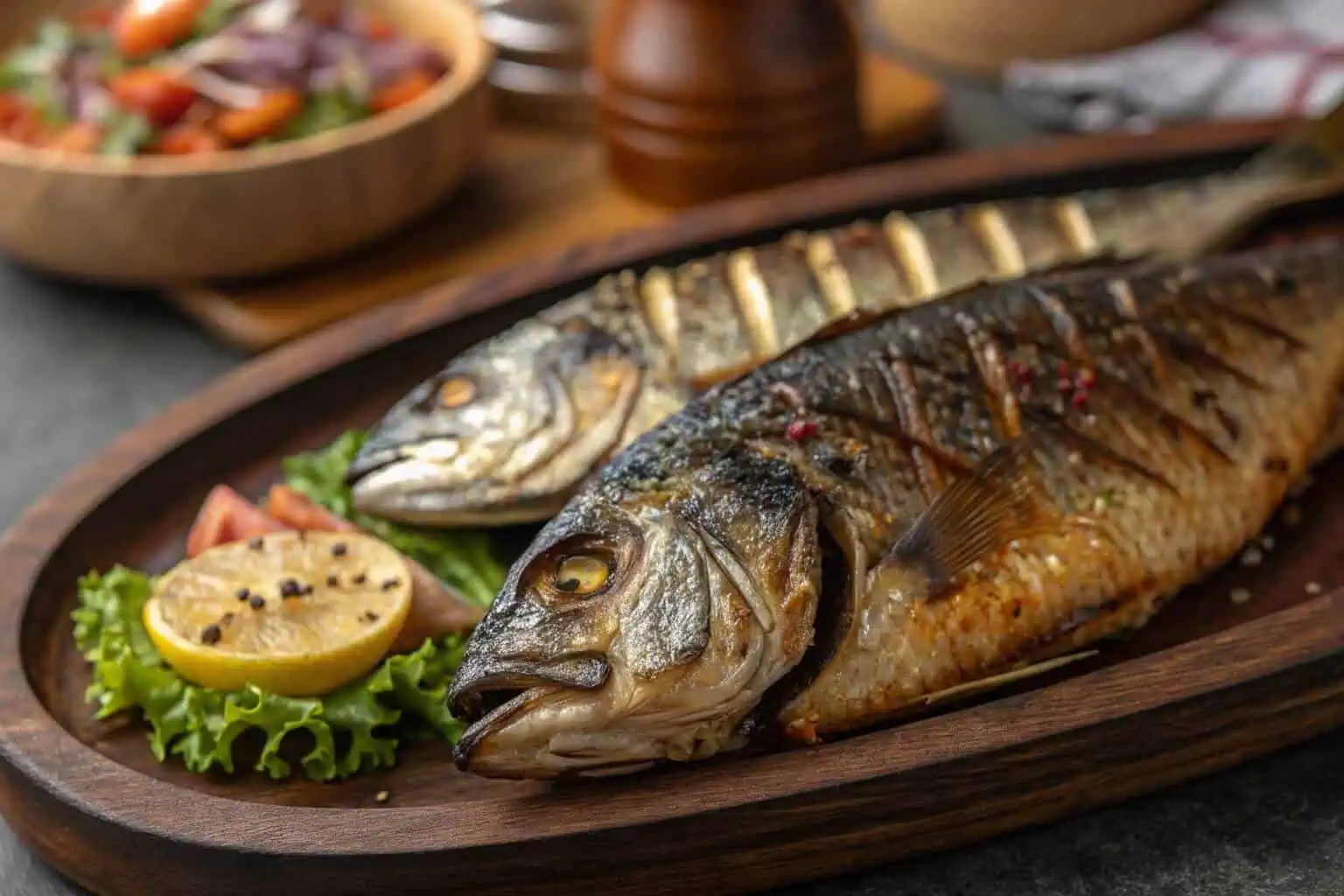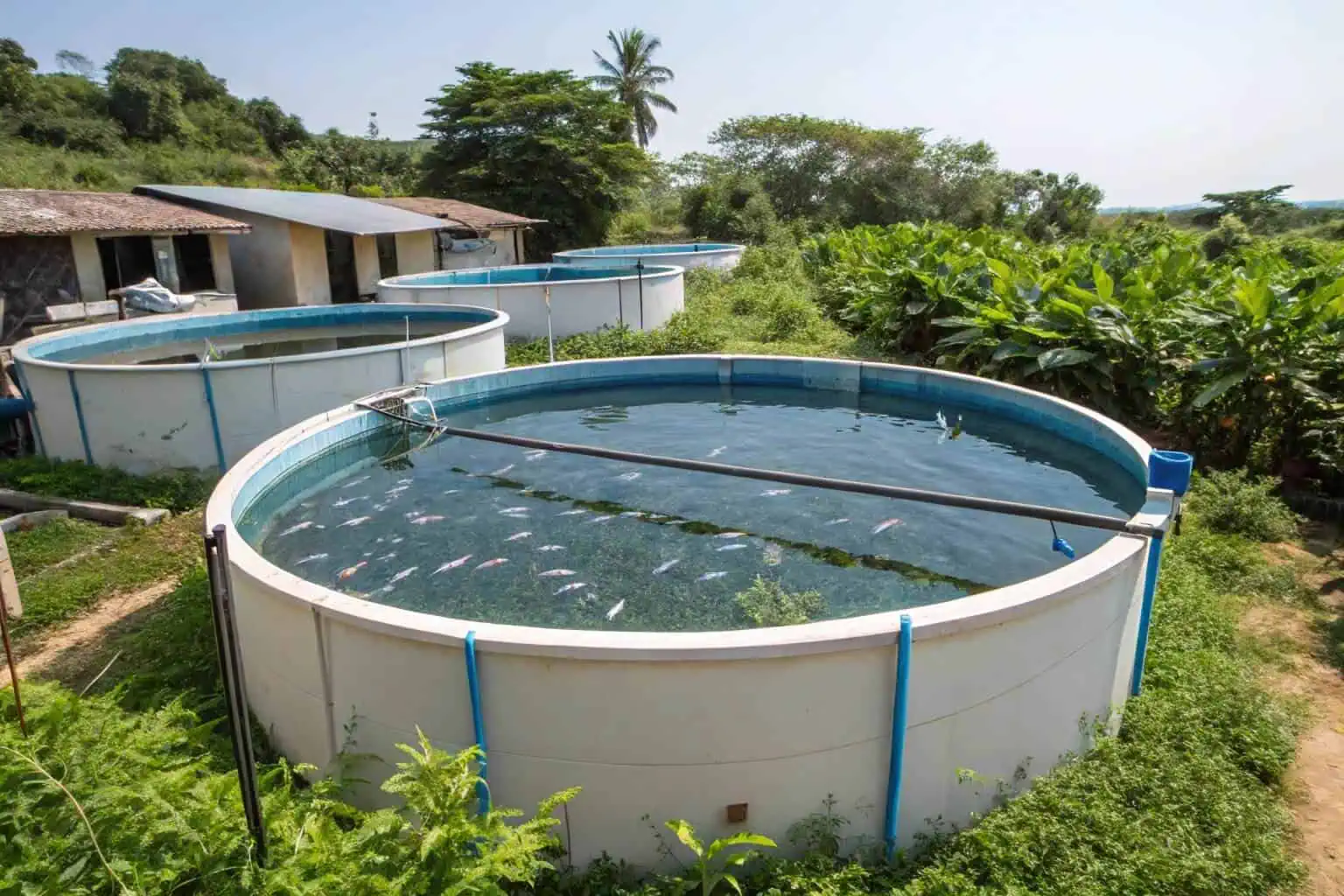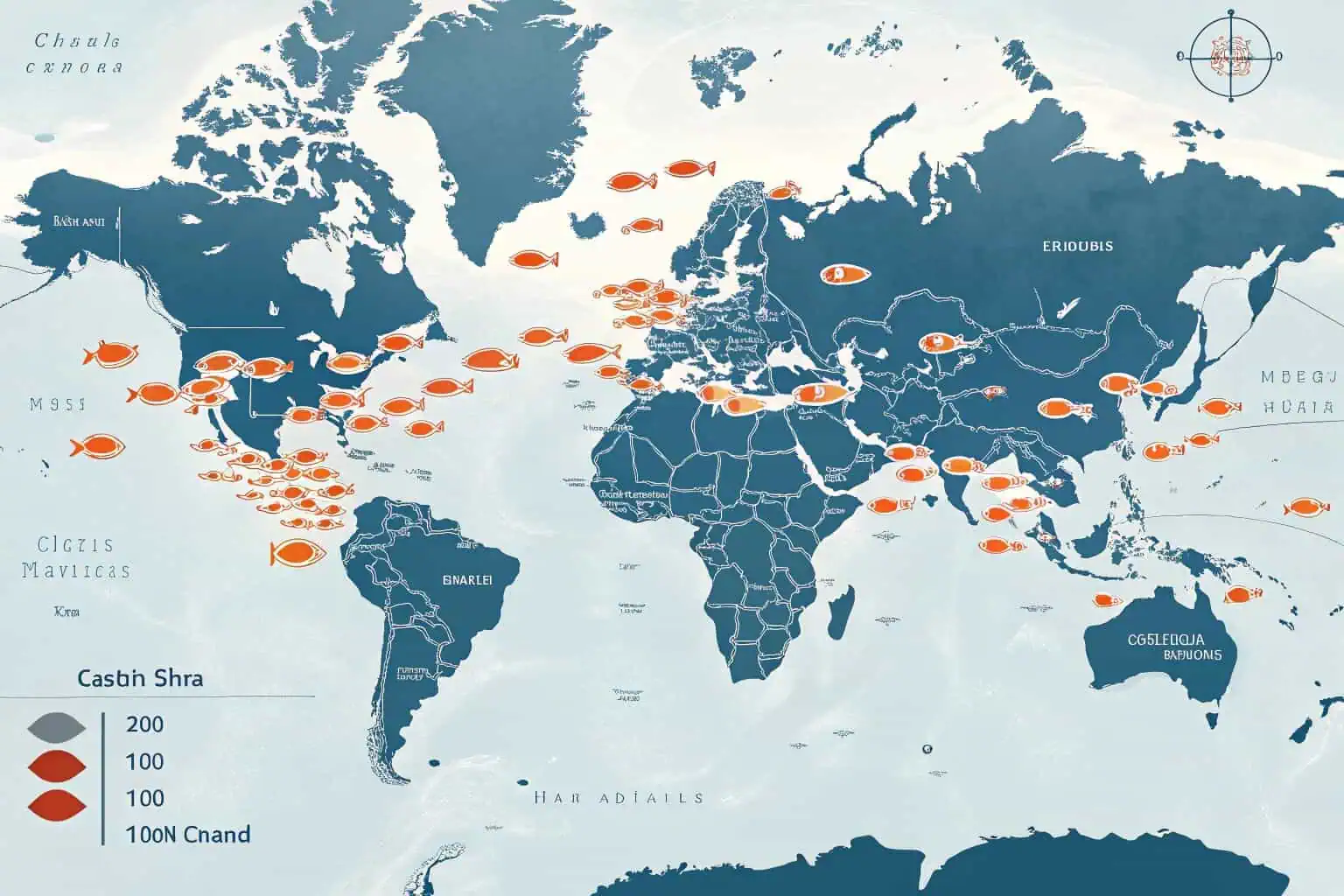What is the fish demand in Ghana?
Are you curious about Ghana's fish market? Growing demand meets limited local supply, creating a unique situation. Let's explore this further.
Ghana faces a significant fish demand that outstrips local production. This high demand is driven by fish being a dietary staple, leading to substantial reliance on imports to meet consumer needs.

As someone deeply involved in the global fish trade, I've watched Ghana's market with keen interest. The gap between what Ghanaians want to eat and what local fisheries can provide is a story I've seen unfold. It's a challenge, but also an incredible opportunity for those looking to invest and innovate. Let's dive into the specifics of this dynamic market.
What is the most consumed fish in Ghana?
Ever wondered which fish varieties top the charts in Ghanaian households? The answer might surprise you, reflecting both local tastes and availability.
Tilapia and mackerel are among the most consumed fish in Ghana. Tilapia is popular in fresh and smoked forms, while mackerel, often imported, is widely consumed due to its affordability and versatility in local dishes.

From my experience, understanding local preferences1 is key. In Ghana, the sizzle of tilapia on the grill or the rich flavor of smoked mackerel in a stew isn't just about food; it's about culture. I've seen how these preferences drive the market. The demand for these specific types of fish shapes everything from local aquaculture efforts to import strategies. It's fascinating to see how taste dictates such a large part of the economy.
Preferred Fish Types and Forms
Ghanaians have diverse preferences when it comes to fish. It's not just about one or two types; it's a whole spectrum.
| Fish Type | Common Forms | Key Reasons for Popularity |
|---|---|---|
| Tilapia | Fresh, Smoked, Grilled | Locally farmed, versatile, cultural staple2 |
| Mackerel | Smoked, Canned, Frozen | Affordable, readily available (imported) |
| Sardinella (Herring) | Smoked, Salted, Dried | Traditional, good for stews and soups |
| Cassava Fish (Anchovies) | Dried, Smoked | Flavor enhancer, affordable protein source |
Regional Variations in Consumption
Consumption patterns also vary across different regions within Ghana. Coastal areas might have more access to fresh marine fish3, while inland areas might rely more on freshwater fish4 or imported varieties. I've noticed that in Accra, for instance, there's a strong demand for both fresh and processed fish due to the urban population's diverse culinary habits. In contrast, communities near Lake Volta might have a higher consumption of freshwater species like tilapia5 directly from the source.
How profitable is fish farming in Ghana?
Is fish farming in Ghana a golden opportunity or a challenging venture? Many investors are asking this, eyeing the gap between local supply and demand.
Fish farming in Ghana can be profitable due to high domestic demand and reliance on imports. However, success depends on overcoming challenges like access to quality feed, technical expertise, and market linkages.

I've spoken with many entrepreneurs looking into fish farming in Ghana6. The potential is definitely there. The constant demand means a ready market. But, I always advise them to look closely at the operational side. It's not just about putting fish in a pond. From my perspective, the real profit comes when you can manage costs effectively and ensure a consistent, high-quality output.
Key Factors for Profitable Fish Farming
Several elements determine success in this sector. It's a mix of good planning and solid execution.
| Factor | Description | Impact on Profitability |
|---|---|---|
| Species Selection7 | Choosing fast-growing, disease-resistant, and marketable species (e.g., tilapia, catfish). | High impact on yield and market price. |
| Feed Management8 | Access to affordable, high-quality fish feed. Feed costs can be 50-70% of operational expenses. | Major impact on cost and growth rates. |
| Water Quality9 | Maintaining optimal water parameters (oxygen, pH, temperature). | Crucial for fish health and survival. |
| Technical Know-how | Proper farm management, disease control, and harvesting techniques. | Reduces losses, improves efficiency. |
| Market Access | Reliable channels to sell the harvested fish at good prices. | Determines revenue and cash flow. |
Challenges and Opportunities
While the demand is a big plus, there are hurdles. I've seen that access to affordable, quality fingerlings and feed10 remains a significant challenge for many small-scale farmers. Disease outbreaks can also wipe out profits if not managed properly. However, there's a growing support system. Government initiatives and private sector investments are slowly addressing these issues. For instance, I'm aware of efforts to improve local feed production and provide training on best aquaculture practices. The opportunity lies in adopting modern techniques and building strong value chains, from pond to plate.
How much fish does Ghana import?
Given the high demand, how much fish does Ghana actually bring in from other countries? The numbers paint a clear picture of the supply gap.
Ghana imports a substantial amount of fish annually, estimated to be over 60% of its total fish consumption. This highlights the significant shortfall in local production despite the country's rich aquatic resources.

When I look at Ghana's import figures, it's always striking. For a country with a significant coastline and inland water bodies, relying so heavily on imports shows the scale of the domestic production challenge11. This isn't just a statistic for me; it represents a huge market that local producers are currently unable to fully tap into. It also means that Ghana is vulnerable to global price fluctuations12 and supply chain disruptions.
Breakdown of Fish Imports
The types of fish imported and their sources are quite varied.
| Category | Details | Implications for Local Market |
|---|---|---|
| Volume | Hundreds of thousands of metric tons annually. | Significant pressure on foreign exchange reserves. |
| Types of Fish | Predominantly frozen fish13 like mackerel, horse mackerel, and hake. Also, canned fish14. | Competition for local fresh fish; fills specific consumer needs. |
| Origin Countries | Major exporters include countries in Europe, Asia, and other parts of Africa. | Diverse supply chains, but also exposure to international market dynamics. |
Reasons for High Import Levels
Several factors contribute to this reliance on imports. I've observed that the local fishing industry, particularly the artisanal sector15, faces challenges like overfishing in some areas, use of outdated equipment, and post-harvest losses. The aquaculture sector16, while growing, is yet to reach a scale that can significantly dent the import bill. Furthermore, the investment needed to modernize and expand local production is substantial. This situation, while a challenge for Ghana's food security, also underscores the immense opportunity for investment in local fish production and processing. I believe that with the right strategies, Ghana can gradually reduce its import dependency.
Which country has the highest demand for fish?
Looking beyond Ghana, which nation leads the world in fish consumption? Understanding global trends provides context to local markets.
China has the highest demand for fish globally, both in terms of total consumption and per capita consumption. This is driven by its large population, rising incomes, and strong cultural preference for seafood.

As someone who tracks global food trends, China's appetite for fish17 is truly remarkable. It's not just about the sheer volume; it's also about the diversity of seafood consumed and the sophisticated supply chains that have developed to meet this demand. This has profound implications for global fisheries and aquaculture18. I've seen how China's demand influences prices and trade flows worldwide. It also highlights the growing importance of sustainable fishing practices to ensure that this demand can be met in the long term.
Global Fish Consumption Leaders
While China is at the top, other countries also show significant fish consumption19.
| Rank | Country | Estimated Total Consumption (million tonnes) | Key Drivers |
|---|---|---|---|
| 1 | China | > 65 | Large population, economic growth, aquaculture production, dietary habits. |
| 2 | Indonesia | > 10 | Archipelago nation, traditional seafood diet, aquaculture. |
| 3 | India | > 9 | Growing population, increasing disposable income, coastal communities. |
| 4 | United States | > 7 | Health consciousness, diverse culinary influences, strong import market. |
| 5 | Japan | > 6 | Traditional seafood-rich diet, high per capita consumption. |
Implications of High Global Demand
The increasing global demand for fish, led by countries like China, puts immense pressure on wild fish stocks. I'm constantly thinking about the sustainability aspect. It has spurred the growth of aquaculture worldwide, which now supplies more than half of the fish consumed by humans. However, aquaculture also has its own environmental challenges that need to be managed. For businesses like mine, Bancy, which provides solutions for water management and aquaculture (like our collapsible fish tanks), this global trend signifies a growing market for innovative and sustainable aquaculture infrastructure20. The challenge for all of us in the industry is to meet this rising demand responsibly, ensuring the health of our oceans and aquatic ecosystems for future generations.
Conclusion
Ghana's fish market presents a compelling mix of high demand and supply challenges, offering significant opportunities for growth in local production and aquaculture, mirroring a broader global trend of increasing fish consumption.
-
Exploring local preferences can provide insights into cultural influences on food choices and market trends. ↩
-
Understanding the cultural significance of tilapia can enhance your appreciation for this versatile fish. ↩
-
Exploring this link will provide insights into the nutritional advantages and sustainability of fresh marine fish consumption. ↩
-
This resource will help you understand the variety and significance of freshwater fish in Ghanaian diets and culture. ↩
-
Discover the reasons behind tilapia's popularity, including its taste, nutritional value, and cultural significance in Ghana. ↩
-
Explore this link to understand the advantages and opportunities in Ghana's fish farming sector, which is booming with potential. ↩
-
Explore this link to discover which species can maximize your aquaculture profits and ensure sustainability. ↩
-
Understanding feed management is crucial for reducing costs and improving growth rates in fish farming. Check this resource for insights. ↩
-
Water quality is vital for fish health and survival. Learn more about maintaining optimal conditions for your fish farm. ↩
-
Explore this link to find valuable resources that can help small-scale farmers access affordable and quality fingerlings and feed, crucial for their success. ↩
-
Exploring the domestic production challenges in Ghana can reveal potential areas for investment and growth in the local economy. ↩
-
Learning about the impact of global price fluctuations on Ghana can help in understanding the broader economic landscape and risks involved. ↩
-
Explore the nutritional advantages and convenience of frozen fish, which can be a great alternative to fresh options. ↩
-
Discover the health benefits of canned fish, a convenient and often nutritious option for meals. ↩
-
Exploring this resource will provide insights into the specific challenges and opportunities within the artisanal fishing sector, crucial for understanding local dynamics. ↩
-
This link will offer valuable information on the growth and potential of the aquaculture sector in Ghana, highlighting its role in food security. ↩
-
Explore this link to understand how China's seafood consumption shapes global markets and sustainability efforts. ↩
-
Learn about the challenges and opportunities in global fisheries and aquaculture due to changing demand dynamics. ↩
-
Understanding global fish consumption trends can provide insights into dietary habits and market opportunities. ↩
-
Exploring advancements in aquaculture infrastructure can provide insights into sustainable practices and technologies. ↩